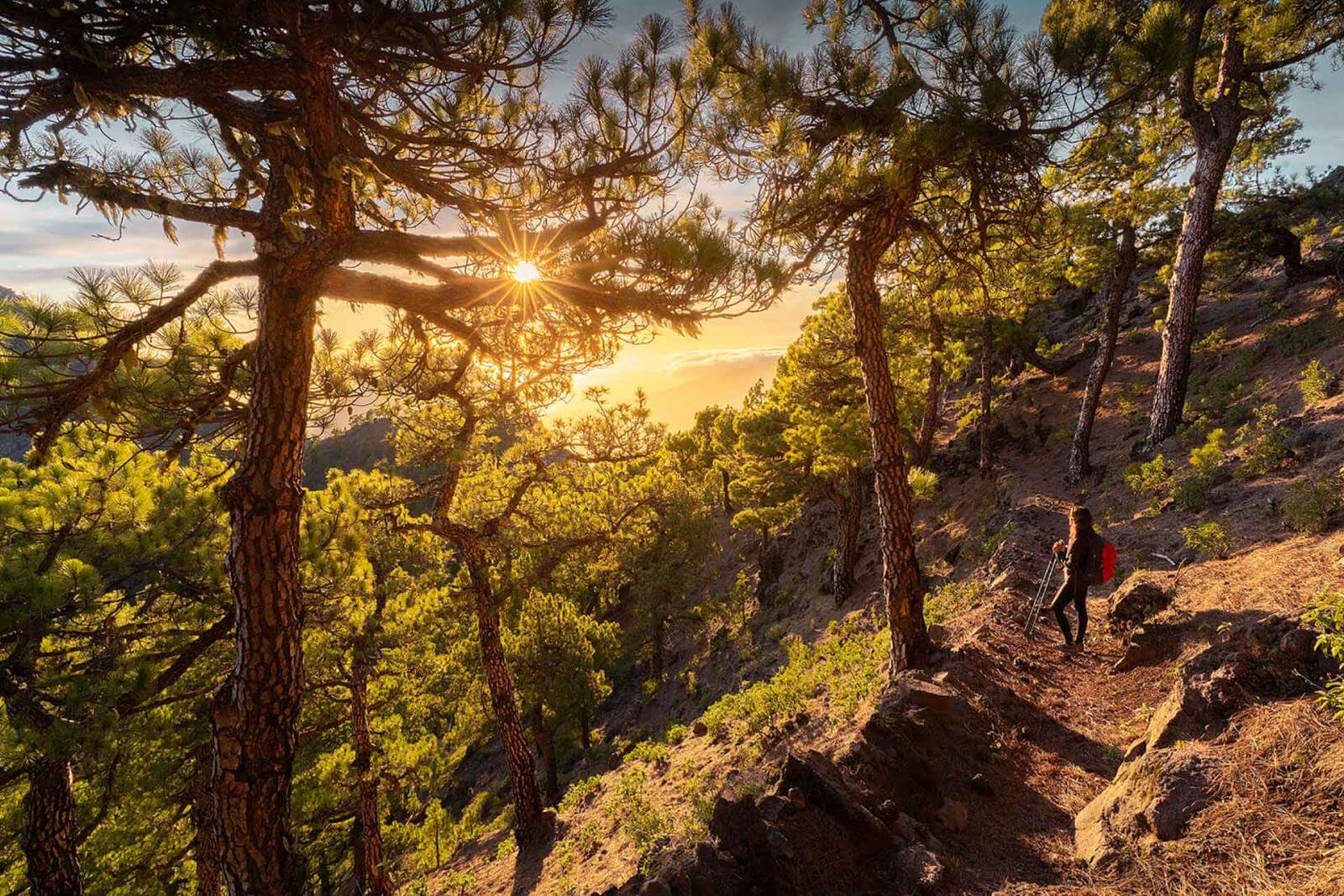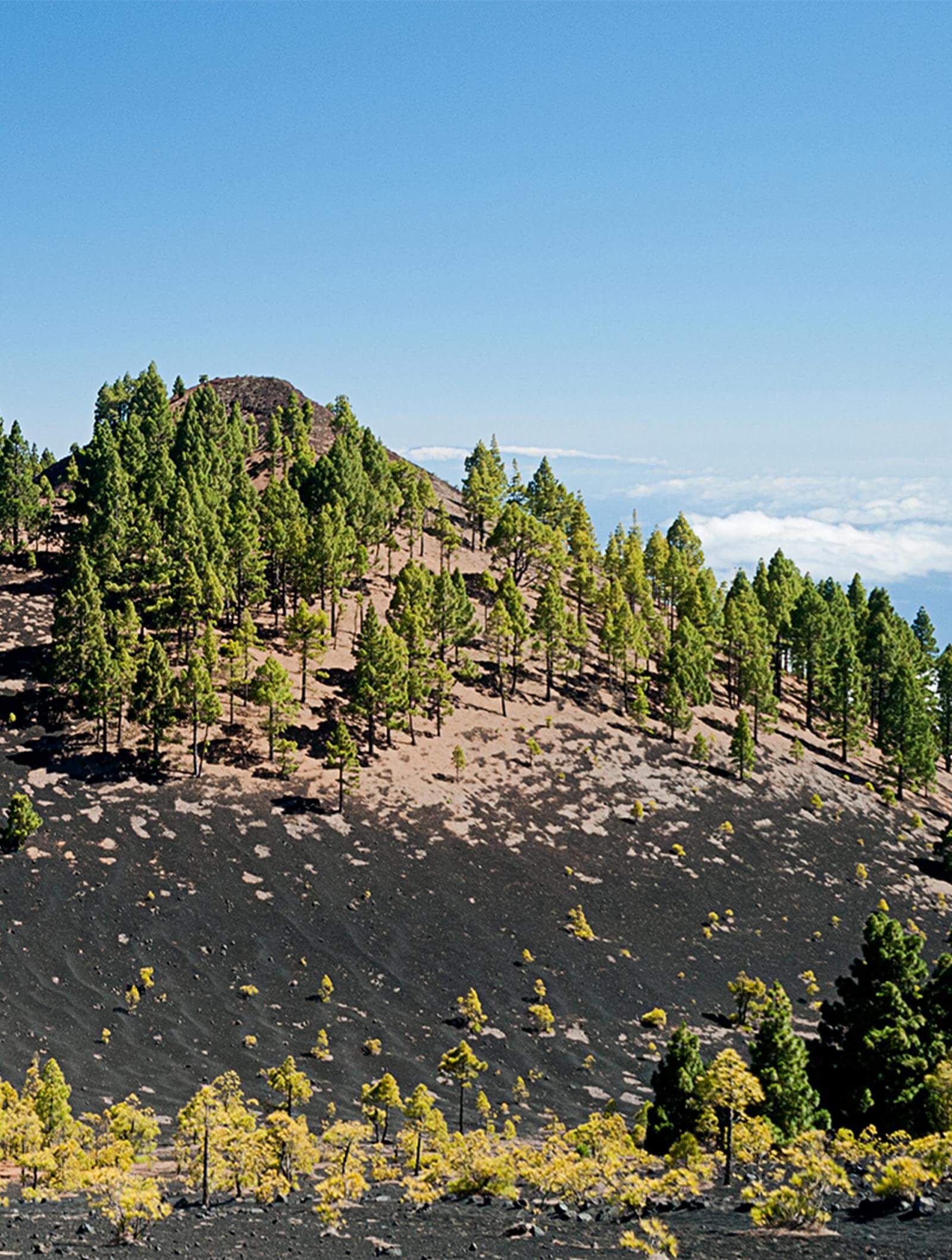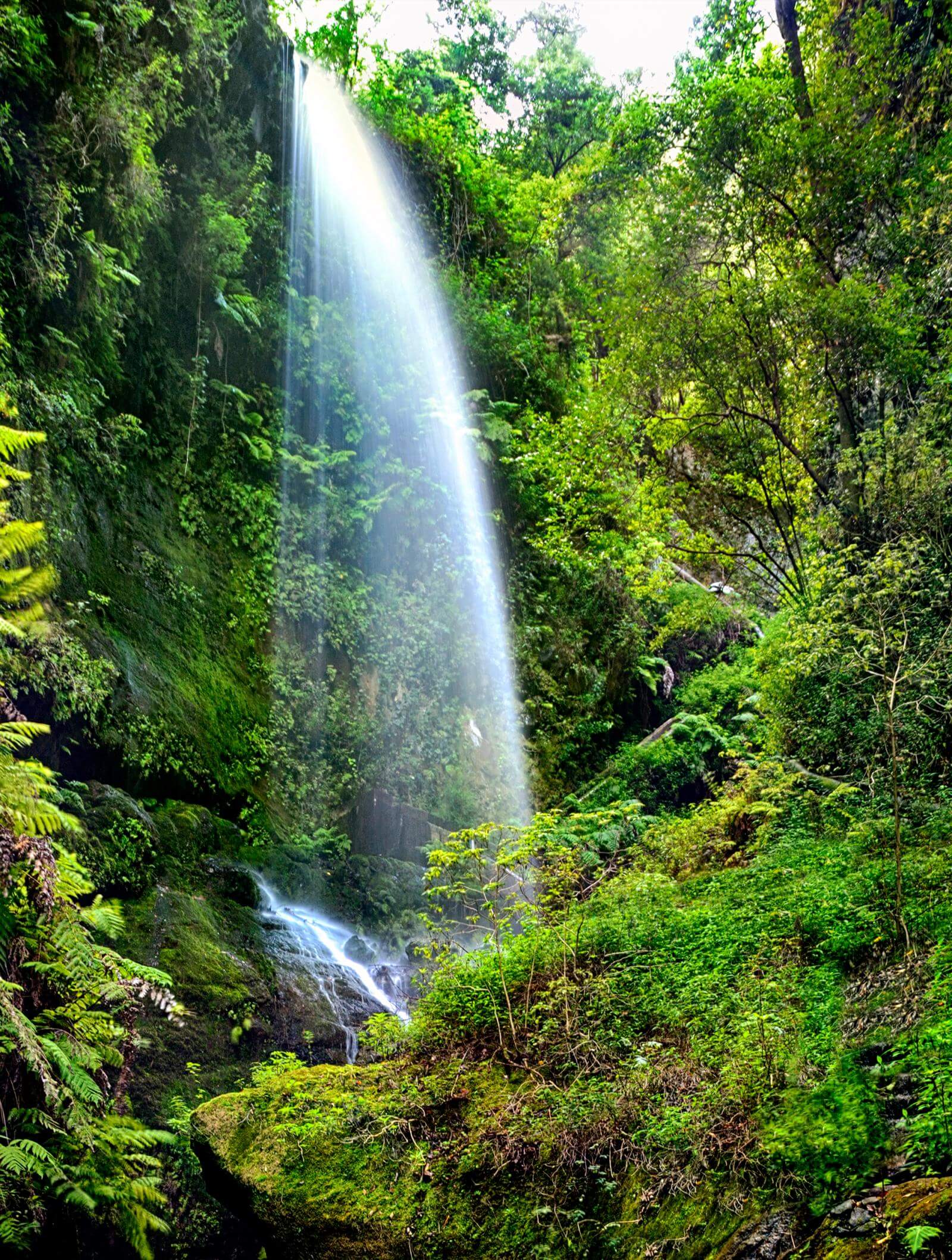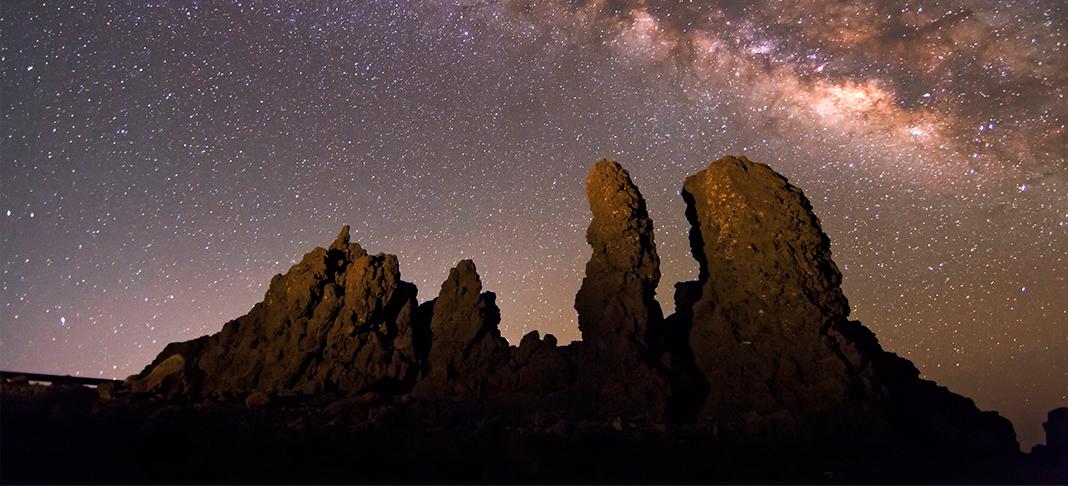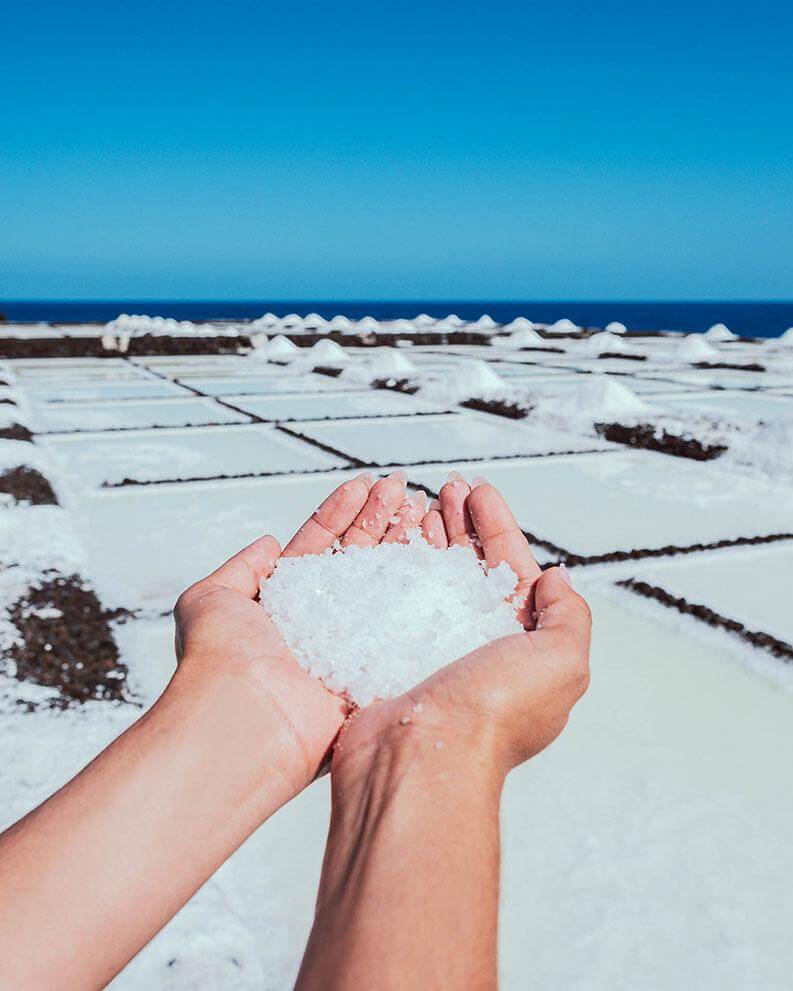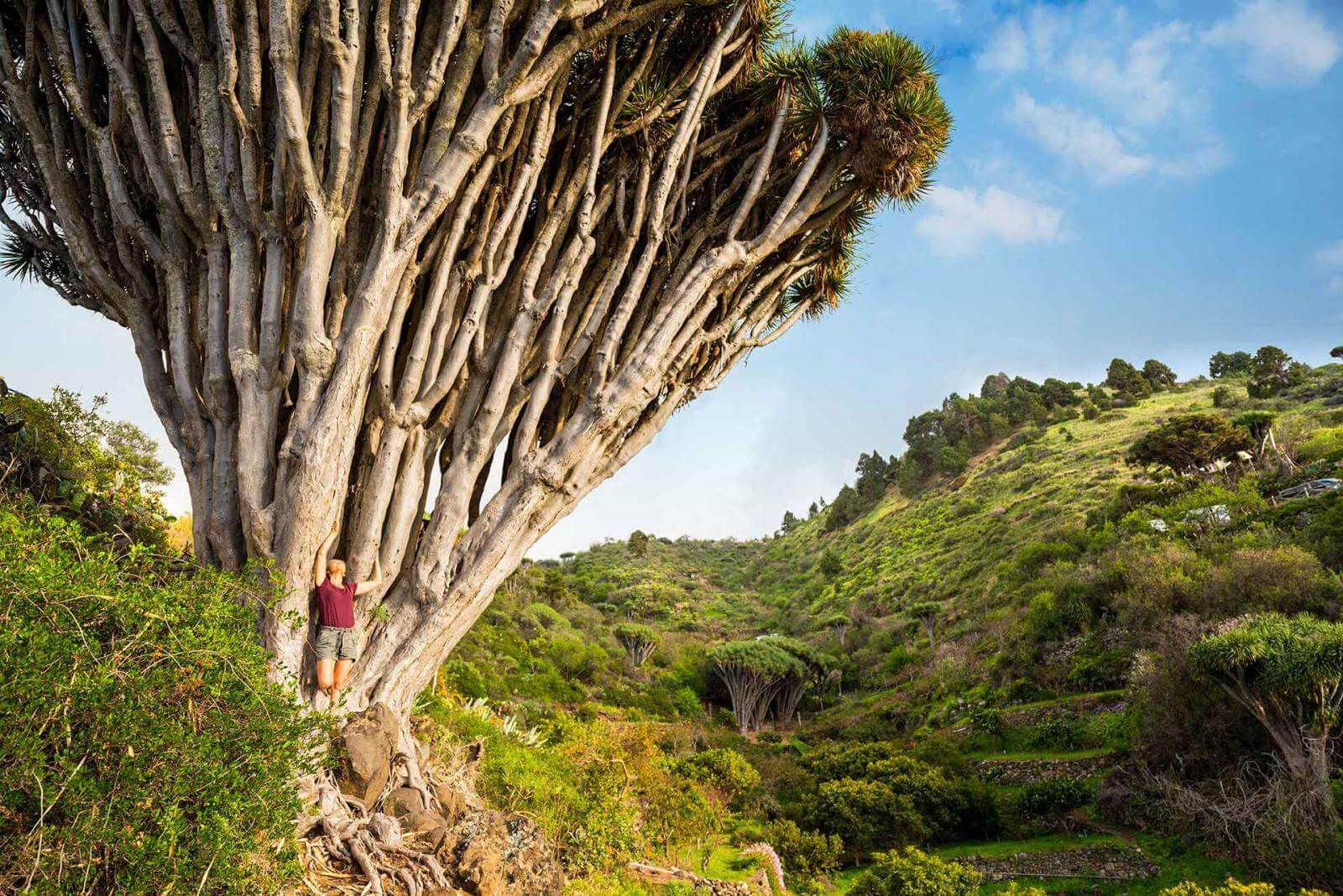La Palma is known for its vast and lush ancient forests, but the magic of its natural spaces goes much further. The trails between volcanoes and seas of clouds, viewpoints and spectacular telescopes from which to contemplate the stars or salt flats open to the sea are just the beginning of an essential tour to get to know the authentic essence of the island.
Caldera de Taburiente National Park
Located in the heart of the island and furrowed by deep ravines, this immense circus of more than 8km in diameter has a very special attraction, the water, which is always present in the streams and small waterfalls inside the park. Also the imposing vertical walls that surround the caldera are upholstered with the intense green of the lush pine forests, creating a magnificent landscape that sticks to the retina. In addition, the Canarian pine, a natural symbol of the island, coexist in this space with a great variety of species of flora and fauna, many of them exclusive.
Entering through the trails of this natural wonder will allow us to discover its corners, listen to the sound of birds and the whisper of tree branches. After the walk, the freshness of the water from the streams invites us to stop to regain our strength and enjoy the moment intensely.
Route of the Volcanoes
This is one of the most beautiful routes on the planet and the most famous of La Palma since, in the past, it was an important communication route between the palm groves. Yes, it must be recognized that it’s difficult if done in its entirety, but walking this path of just over eight hours that runs through the Natural Park of Cumbre Vieja allows us to contemplate the two slopes of the island, vertiginous landscapes and, on clear days, the neighboring islands of La Gomera, El Hierro and Tenerife. Spectacular!
And if we are lucky enough to undergo this experience at the beginning of the summer...a bonus! The heart, endemic to the Canary Islands, is in bloom, unfolding an intense yellow color in extensive mantles that, together with the green of the pines, draws a beautiful contrast in the dark volcanic earth.
Los Tilos Forest
One of the most important laurel forests in the world is located on this island. Los Tilos is a primitive and humid forest, formed by numerous plant species that disappeared from other places at the end of the tertiary era. The enabled trails take us into such exuberance that, in some parts of the forest, not even light is able to cross. This lushness, on the other hand, does allow us to find giant ferns, numerous tree species – some reach enormous heights – streams, small wooden bridges...and, with a little luck, to be able to observe some specimens of the elusive and shy laurel pigeons that inhabit these forests.
Roque de los Muchachos
Located on the peaks of the island, at almost 2500m above sea level, and on the edge of the spectacular Caldera de Taburiente, it is one of the best astrophysical observatories in the world. Precisely this high altitude, together with other factors such as the exclusive geographical position and an exceptionally stable atmosphere, have made astronomy and astrophysics worldwide look at this Canary Island to install the best telescopes on the planet. But this extraordinary quality must be preserved. Therefore, in the Canary Islands there is a specific law that protects these skies from light pollution.
In addition to having before our eyes the imposing telescopes inside which the most outstanding scientists from more than twenty countries tirelessly work, the highest place in La Palma has other surprises in store for us. Apart from being able to contemplate the impressive Caldera de Taburiente in all its magnitude, an overwhelming volcanic nature extends around us, apparently inert until the codeso and the retama bloom... Then white and yellow take over the landscape.
A must-see is also the Roque de los Muchachos Visitor Center where the whole family can delve into the secrets of the universe in a fun and educational way.
Santa Cruz de La Palma
The capital of the island is a cozy and intimate city where life goes on without haste. Walking through the cobbled streets of the historic center, we can admire the careful traditional architecture in which the magnificent balconies of the mansions built in carved wood stand out, undoubtedly among the best preserved in the Canary Islands. The Plaza de España is one of the most visited areas of Santa Cruz de La Palma, a sample of the best Renaissance sets in the Canary archipelago.
For those who wish to cool off with a swim, the beach of Santa Cruz de la Palma offers multiple options thanks to its 1200m of length and width of 50m.
This small town also hosts curious celebrations. One of them is the Dance of the Dwarfs, an original show that takes place every five years within the framework of the Bajada de la Virgen, and the famous Los Indianos party, on Carnival Monday, one of the most unique festive events in Europe.
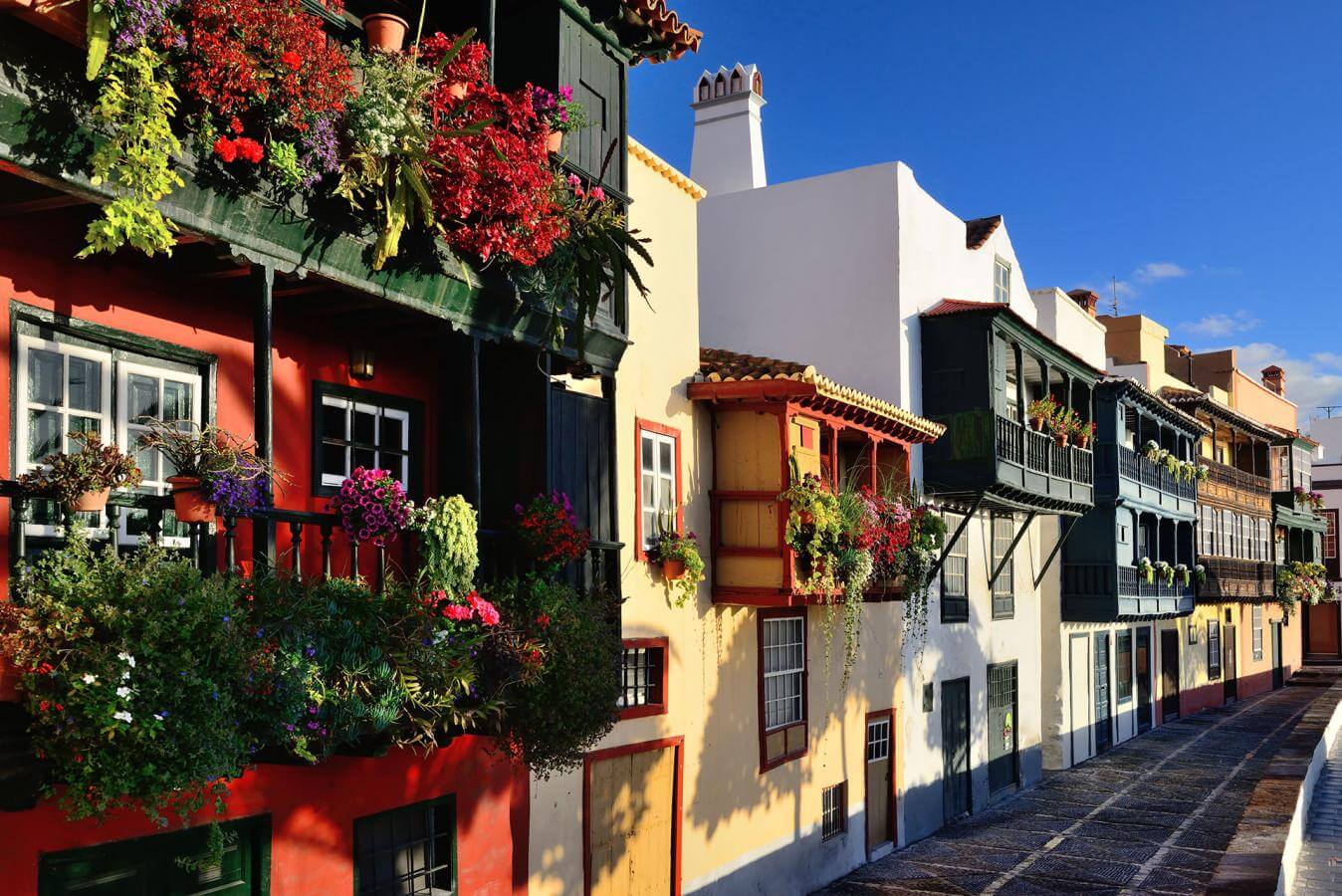
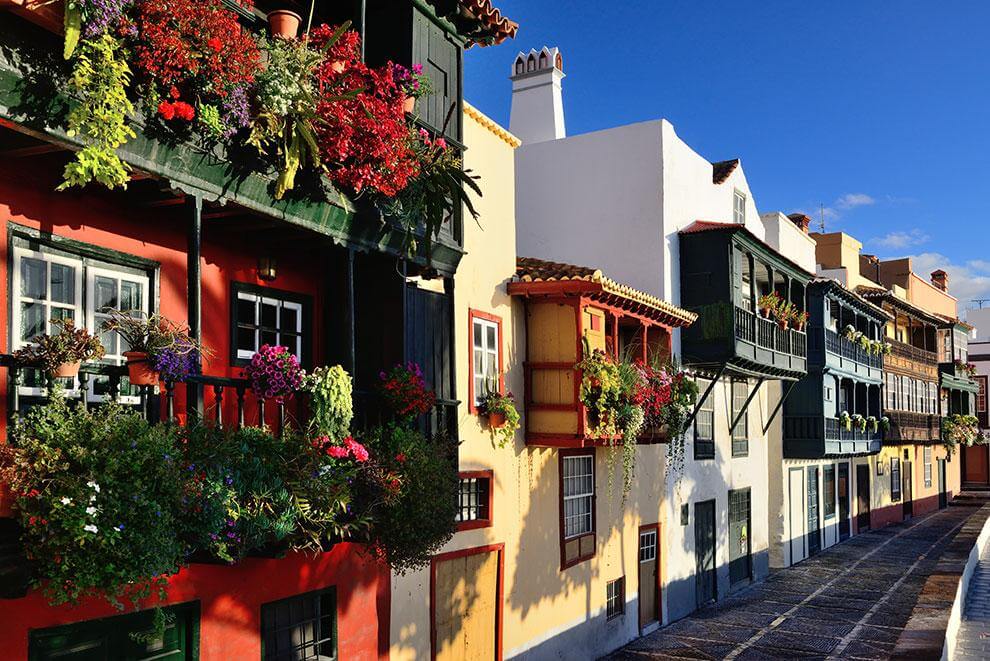

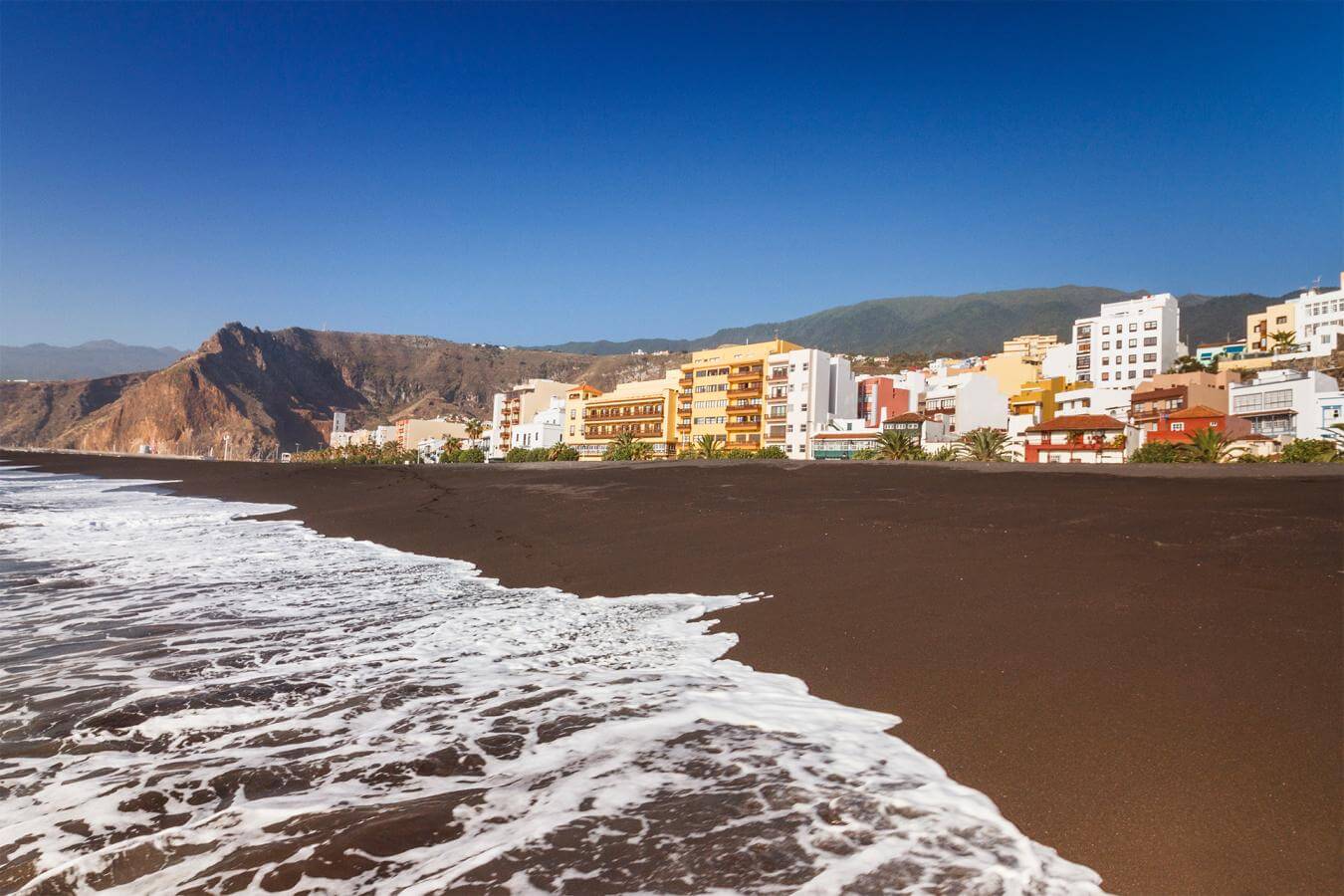

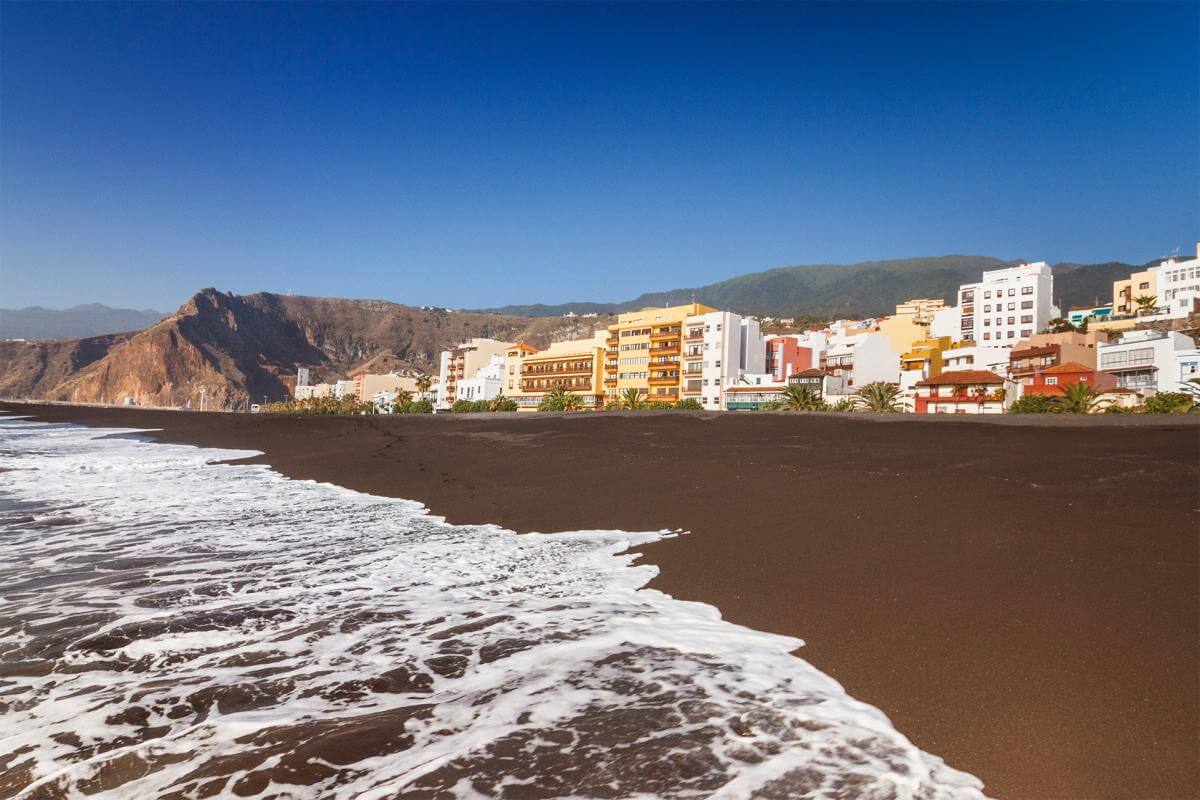
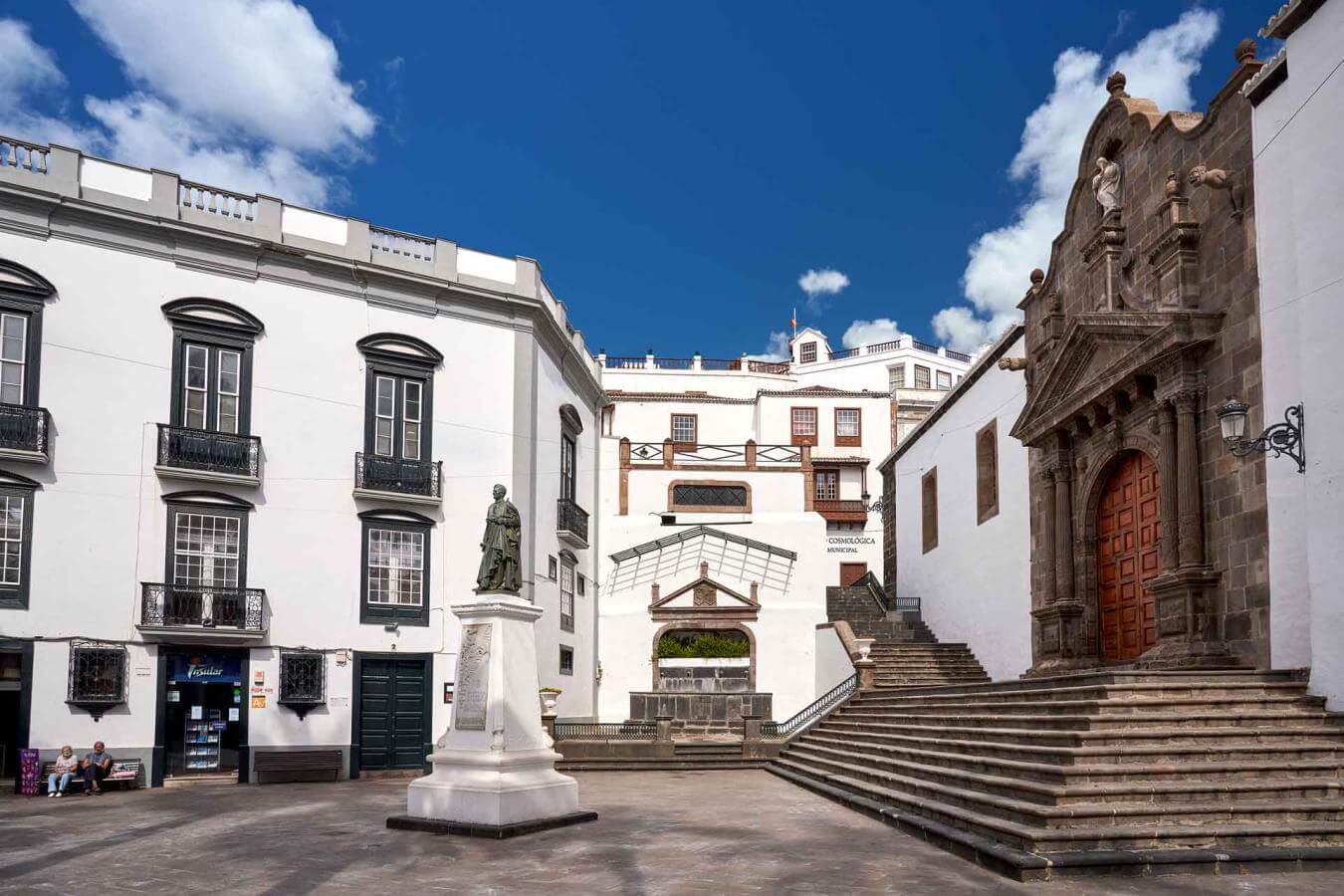


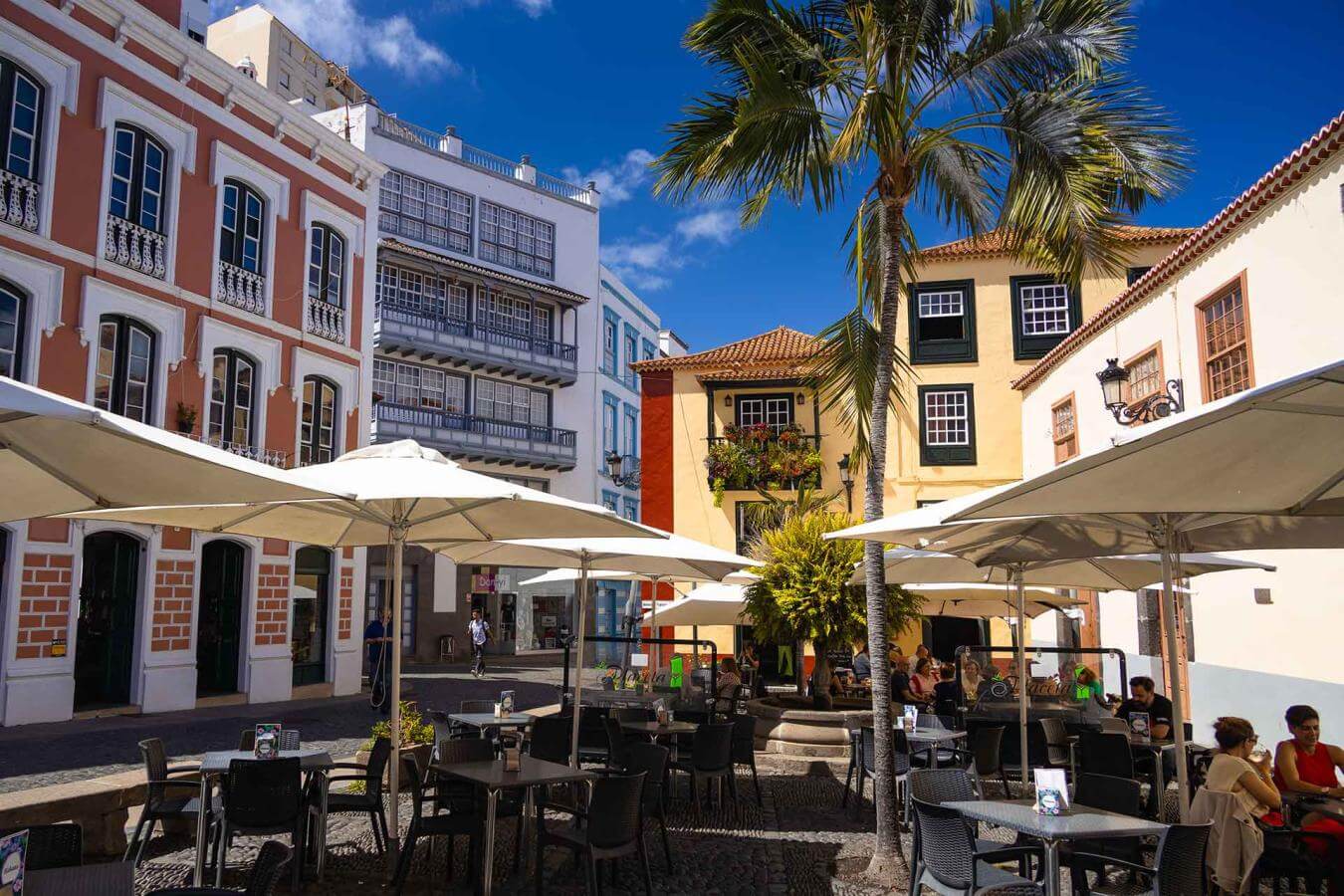


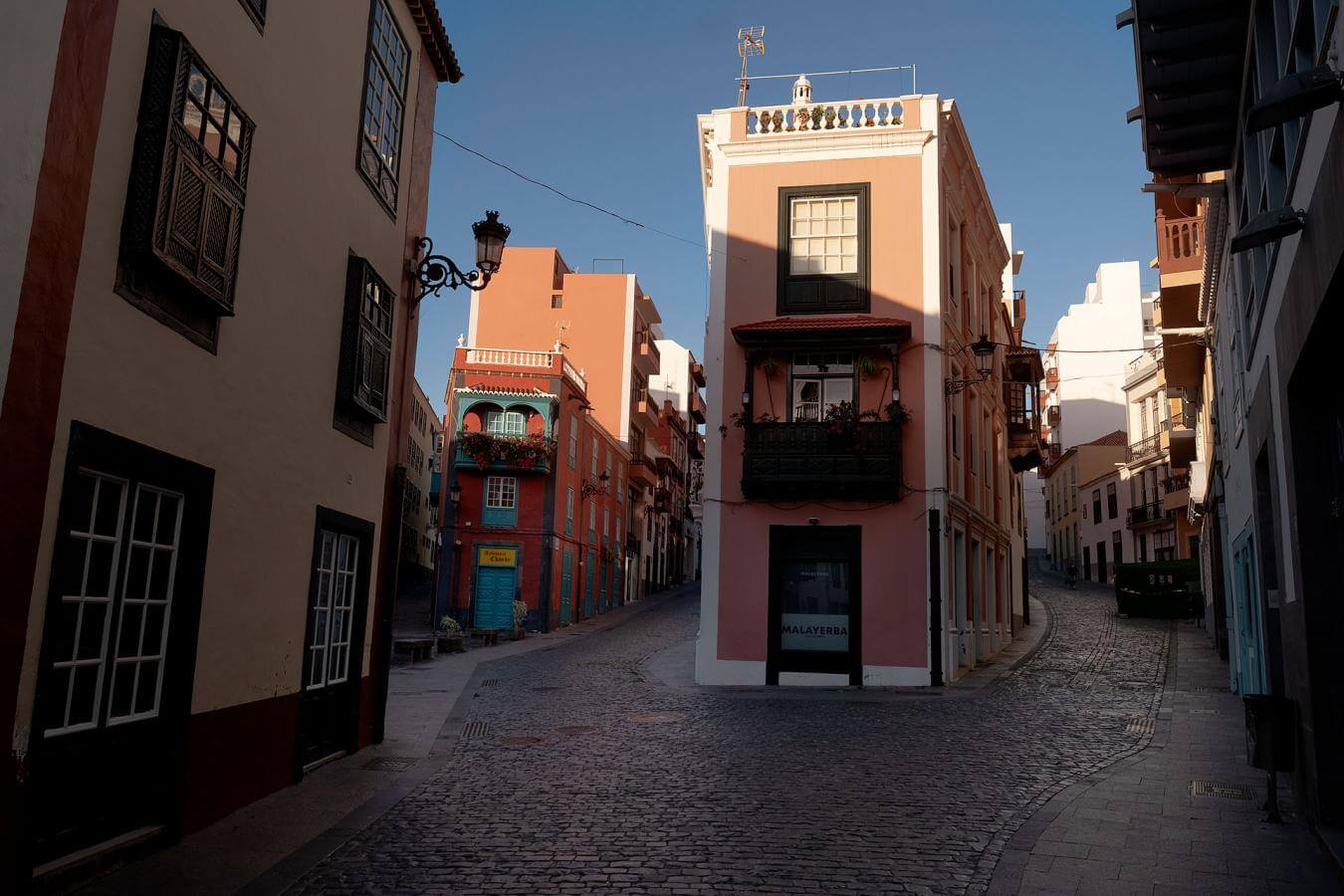
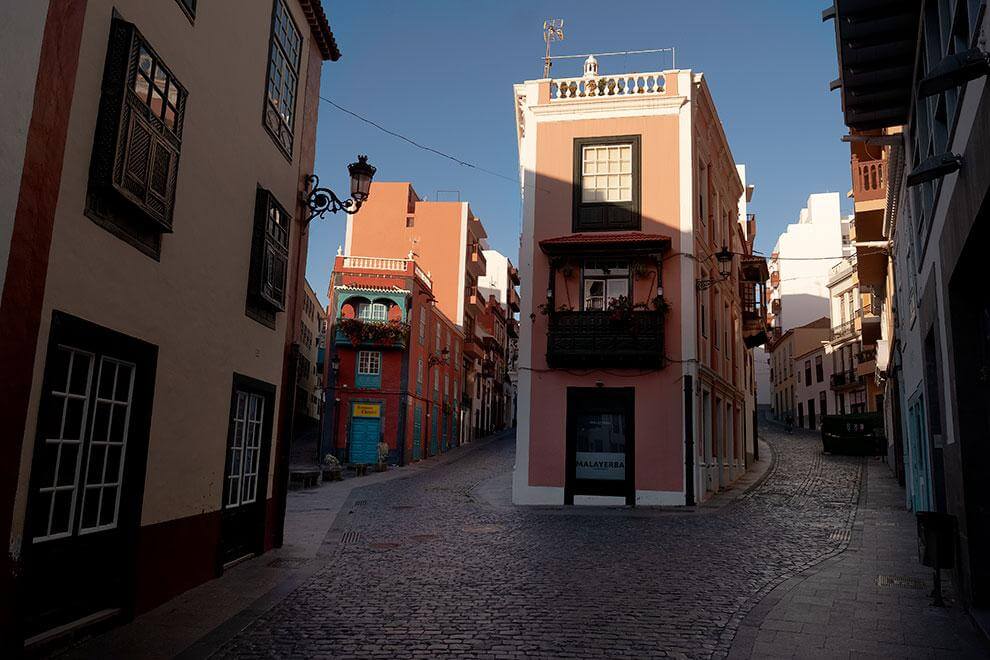
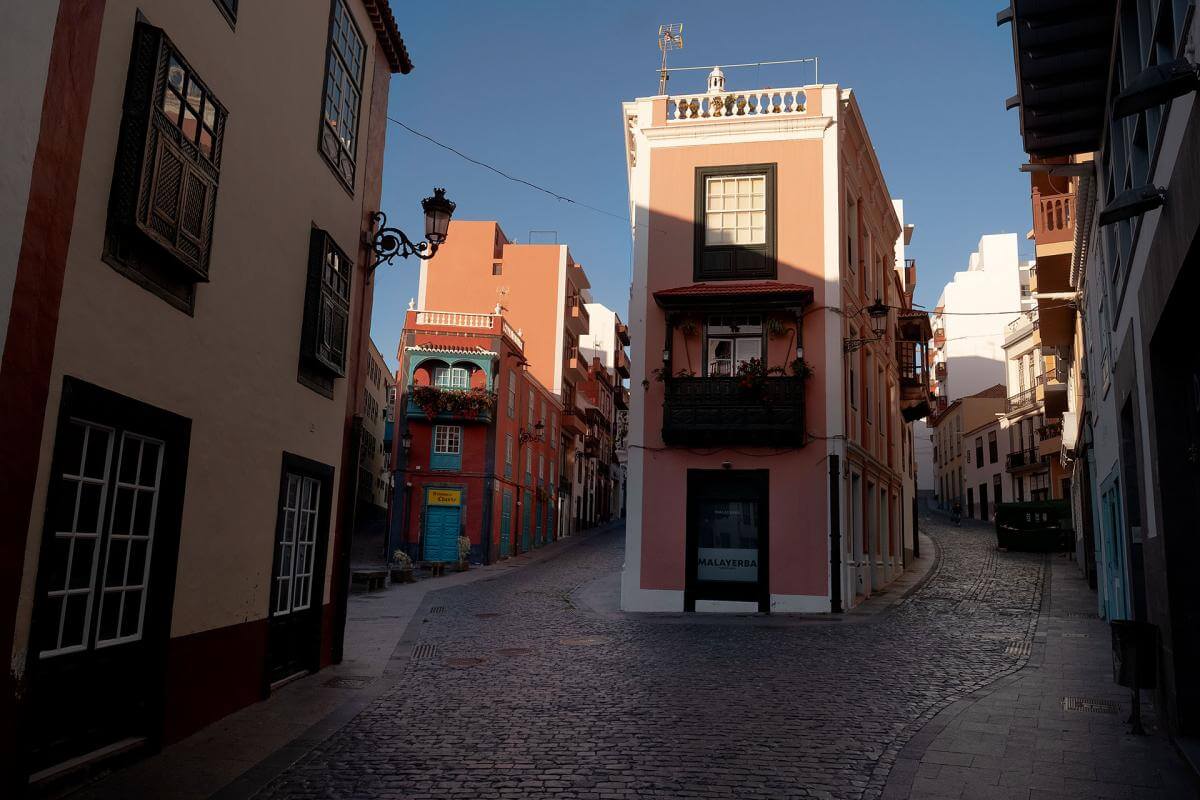
Fuencaliente Salt Flats
In the south of the island we find this visual spectacle where the blinding white of the salt and the pink of the ponds stand out on the dark volcanic rock. Besides its undoubted landscape beauty, this is a place of great ethnographic value, since traditional methods are still used for the extraction of salt, obtaining an ecological product of extraordinary quality that we can even take as a souvenir.
As if this were not enough, the Fuencaliente Salt Flats were declared a Site of Scientific Interest for being a nesting place for migratory birds.
The New Volcano of La Palma
Located in the municipality of El Paso, the new volcano of La Palma is the result of the eruption that shook the island on 19 September 2021, and that remained active for 85 days, spitting out around 200 million cubic meters of lava.
Nowadays any excursion to the volcano must be carried out through an active tourism company. The visits are made by a single path enabled for this purpose and end near the cone of the volcano, located 1,131m above sea level. It is recommended to wear comfortable and resistant shoes, as well as protection against wind and sun.
There is also the possibility of contemplating the volcano from some of the nearby viewpoints. Among the most outstanding are: the Time Viewpoint (at the entrance of the municipality of Tijarafe), the Tajuya Viewpoint (in the municipality of El Paso), or the Tazacorte marina, from where you can see some of the new fajanas.
Los Dragos de Buracas
Near the quiet village of Las Tricias stands one of the most special forests in the archipelago. Known as Dragos de Buracas, in this area there is one of the largest concentrations of drago trees in the Canary Islands. Walking among them admiring their beauty is one of the most original activities on the island.
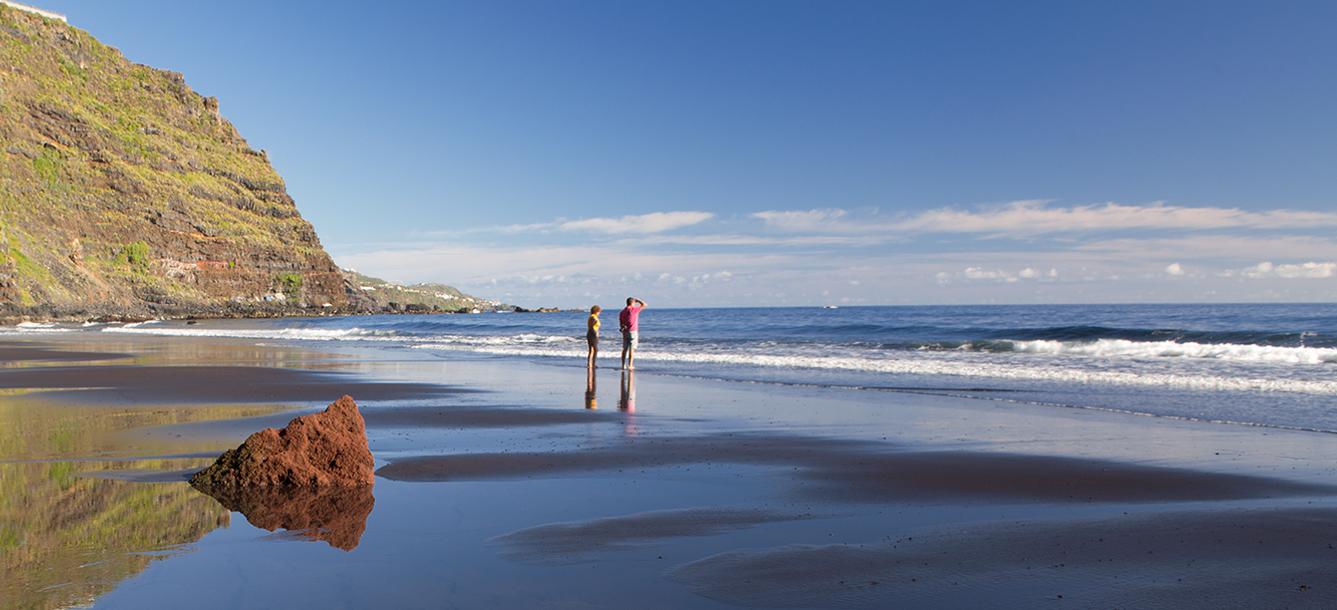
Beach or Mountain Day
If what you want is to enjoy the sun and the water, the visitor can approach Nogales Beach, a paradise of black sand and blue waters in the north of the island, or, if you prefer a more comfortable option, visit the pools of La Fajana, a natural spa for all audiences, since its location protects them from the waves.
For those who enjoy a good walk, the municipality of Villa de Garafía, with beautiful and steep ravines, as well as impressive views, is ideal for a quiet day. Or a path on the roof of the island, through Hilera de la Cumbre, in addition to any of the options described above.
Finally, it is highly recommended to approach the El Time Viewpoint, whose sensational view over the municipalities of El Paso, Los Llanos de Aridane and Tazacorte will remind us of the thousand reasons and corners for which La Palma is known as La Isla Bonita, in addition to offering us an unparalleled view of the new volcano of La Palma, the lava flows and the fajanas to which it gave birth




